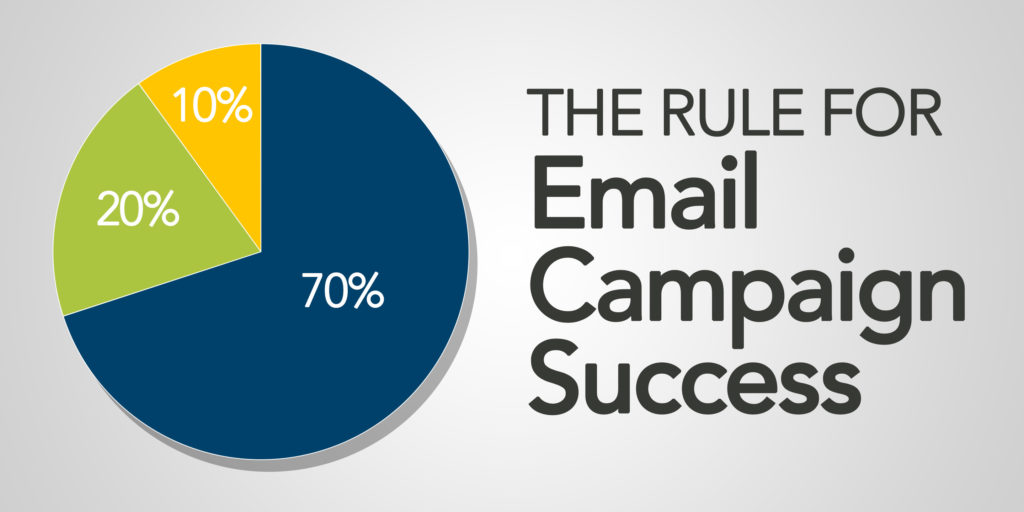You’re probably familiar with the 40-40-20 rule for direct marketing: a campaign’s success is 40% due to the right mailing list, 40% due to the right offer, and 20% due to the design or presentation.
When I started with DemandGen over three years ago, the rule for email campaign success (especially for nurtures) was closer to 60% due to the list, 25% to the offer, and 15% to the design.
Now, I would say it is more like 70-20-10.

Part of this change comes from more companies embracing content marketing, and from the proliferation of marketing automation creating more uniformity across designs and types of offers. The biggest driver, however, is the sheer amount of communication being directed at each individual across all channels.
In looking at engagement across a wide variety of campaigns, matching the offer and message with the right prospect will still drive outcomes through the sales funnel. What has changed is what happens when that process is not done well.
First, prospects have become less tolerant of non-targeted communications. Couple this with spam filters, “Clutter” folders and Gmail categories, and it’s easy to see that proper targeting of the first few touches to a new lead are vital in establishing your value to them.
Second, the relevance and timing of your communications with the prospect’s stage in the buyer’s journey is even more important in cutting through other noise. Focusing on providing value through the content that the prospect has mostly recently signed up to receive, and then identifying key digital body language to trigger additional nurtures, shows the largest engagement with both the campaigns and accelerating the prospect through the funnel.
Underlying these two issues is proper segmentation of your prospect database.
I don’t mean just segmentation by the standard firmographic information you may have about the prospect. Further segmentation into groups, identified by digital body language and self-selected preferences (whether through a Preference Center or signing up for specific communications), is critical. Also, capturing key data such as prospect source lets you slice campaign performance in different ways to identify segments by their varying engagement.
This segmentation process starts with assumptions made in matching the data you have on a prospect — such as a title, firm, etc. — to a persona identifying pain points and motivations to the messaging for your product. After the first touches sent to the individual prospect, it becomes an iterative process to compare campaign performance to additional behavioral and other explicit data you can gather through forms or data appends on the prospect.
This is the biggest opportunity to improve not only campaign engagement but funnel acceleration. By identifying the key information – behavioral and explicit – for better performing segments, those prospects can be targeted with campaigns directly. Additionally, initial campaigns can be tweaked to better engage those segments with lower engagement or separate them off into separate campaigns if needed.
That way, you can use this vital feedback to get the right offers to the right segments and increase the value of your communications to the prospect.
And that will lead to a win-win for you and your future customers.

Ryan Johnson develops and implements marketing automation strategies for DemandGen clients. As a DemandGen Consultant, he has helped clients across a wide range of industries to streamline and optimize their marketing and sales processes to drive measurable success and ROI.
The post When Looking to Improve Campaign Results, Look to Your Segmentation First appeared first on DemandGen.
About the Author
More Content by DemandGen























